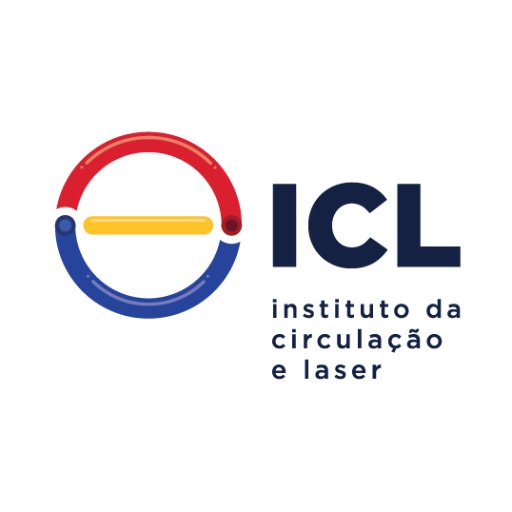Have you ever wondered what ICL stands for and why it's suddenly everywhere? If you're feeling a bit lost, don’t worry—you're not alone. ICL, or Implantable Collamer Lens, is more than just a medical term; it's a game-changer in the world of vision correction. Whether you're nearsighted, farsighted, or simply curious about alternatives to glasses and LASIK, understanding the ICL definition could be your first step toward clearer vision. So, buckle up, because we're diving deep into everything you need to know about ICL!
Imagine a world where you wake up in the morning without needing glasses or contacts. Sounds like a dream, right? For many, this dream has become a reality thanks to ICL. But what exactly is it? In simple terms, ICL is an implantable lens that enhances your vision without permanently altering your eye's structure. Unlike LASIK, which reshapes the cornea, ICL works by adding an extra layer of clarity right inside your eye.
Before we dive deeper, let’s address the elephant in the room: Why should you care about ICL? Well, if you’ve been struggling with traditional vision correction methods or if you’re simply looking for a long-term solution, ICL might just be your golden ticket. Stick around as we break down everything you need to know about ICL, including how it works, who it’s for, and why it’s worth considering.
Read also:Agt Winners The Ultimate Guide To Americas Got Talent Champions
Table of Contents
- What is the ICL Definition?
- How Does ICL Work?
- Who Qualifies for ICL?
- Benefits of ICL
- Potential Risks and Side Effects
- The Cost of ICL Surgery
- ICL vs LASIK: Which is Better?
- Step-by-Step Guide to the ICL Procedure
- Recovery Process After ICL
- Frequently Asked Questions About ICL
What is the ICL Definition?
Alright, let’s start with the basics. ICL stands for Implantable Collamer Lens. It’s essentially a tiny lens made from a biocompatible material called Collamer that’s surgically implanted into your eye to correct vision problems. Unlike contact lenses, which sit on the surface of your eye, ICL is placed behind the iris but in front of your natural lens. This makes it a permanent yet reversible solution for those dealing with significant vision issues.
The beauty of ICL is that it doesn’t involve cutting or reshaping your cornea. Instead, it works by enhancing your eye’s natural focusing power, making it an excellent option for people with high prescriptions or thin corneas who might not qualify for LASIK. Plus, it’s super customizable, meaning it can be tailored to fit your unique vision needs.
But here’s the kicker: While ICL is relatively new compared to other vision correction methods, it’s already being hailed as one of the most advanced technologies available. So, if you’re looking for a way to improve your vision without compromising the integrity of your eyes, ICL might just be the answer you’ve been waiting for.
Why is ICL Gaining Popularity?
Let’s face it—LASIK has been the go-to option for vision correction for years. But as technology evolves, so do our options. ICL is gaining traction because it offers a safer, more effective solution for people with severe vision problems. Think of it as the next generation of vision correction technology.
- Safe: ICL doesn’t alter the structure of your eye, reducing the risk of complications.
- Effective: It provides crystal-clear vision, often better than glasses or contacts.
- Reversible: Unlike LASIK, ICL can be removed if necessary, giving you peace of mind.
How Does ICL Work?
Now that we’ve covered the basics, let’s get into the nitty-gritty of how ICL works. During the procedure, an ophthalmologist makes a small incision in your cornea and carefully places the ICL lens behind your iris. The lens then unfolds and settles into position, working alongside your natural lens to provide clearer vision.
Here’s the best part: The entire procedure takes about 15-30 minutes per eye, and most people experience immediate results. Within a day or two, you’ll notice significant improvements in your vision without the hassle of glasses or contacts. It’s like magic, but with science!
Read also:Molly Amp Mike Cast The Ultimate Guide To The Beloved Shows Stars.ht
What Makes ICL Different from Other Vision Correction Methods?
While LASIK and PRK are great options for many, they’re not suitable for everyone. ICL, on the other hand, offers a broader range of benefits:
- It’s ideal for people with high myopia, hyperopia, or astigmatism.
- It doesn’t require corneal reshaping, making it safer for those with thin corneas.
- It’s reversible, giving you more flexibility in the future.
Who Qualifies for ICL?
Not everyone is a candidate for ICL, but the good news is that it’s suitable for a wide range of people. Generally, you’ll need to meet the following criteria:
- Be at least 21 years old (though some clinics may accept younger patients).
- Have stable vision for at least one year.
- Have no significant eye conditions like glaucoma or cataracts.
- Be within the prescribed range of nearsightedness (-3.00D to -20.00D).
That said, it’s always best to consult with an eye specialist to determine if ICL is right for you. They’ll perform a thorough eye exam to assess your candidacy and discuss your options.
What if I Don’t Qualify?
If ICL isn’t the right fit for you, don’t fret. There are plenty of other vision correction methods available, including LASIK, PRK, and even traditional glasses or contacts. Your eye doctor will work with you to find the best solution for your unique needs.
Benefits of ICL
So, why should you consider ICL over other vision correction methods? Here’s a quick rundown of its top benefits:
- Crystal-Clear Vision: ICL provides exceptional clarity, often surpassing the results of glasses or contacts.
- No Maintenance: Unlike contacts, ICL requires no daily upkeep or cleaning.
- Reversible: If your vision changes or you decide ICL isn’t for you, the lens can be removed.
- Long-Lasting Results: Most people experience lasting improvements in their vision after ICL.
Plus, it’s a great option for people who lead active lifestyles or work in environments where glasses or contacts aren’t practical. Whether you’re a swimmer, a cyclist, or a professional photographer, ICL can help you see the world more clearly—without any hassle.
ICL and Sports: A Perfect Match?
Absolutely! If you’re an athlete or someone who enjoys outdoor activities, ICL could be a game-changer. Imagine playing basketball without worrying about your glasses fogging up or your contacts drying out. With ICL, you’ll have the freedom to pursue your passions without any visual limitations holding you back.
Potential Risks and Side Effects
Like any medical procedure, ICL comes with a few risks and side effects. However, these are generally rare and manageable. Some potential complications include:
- Infection or inflammation
- Increased intraocular pressure
- Halos or glare at night
- Corneal edema
That said, most patients experience no significant issues and enjoy excellent results. Your surgeon will take every precaution to minimize risks and ensure a smooth recovery process.
How Can I Minimize Risks?
Choosing an experienced and qualified surgeon is key to minimizing risks. Additionally, following your doctor’s pre- and post-op instructions carefully can help ensure a successful outcome. And remember, if you notice any unusual symptoms after the procedure, don’t hesitate to contact your eye care professional immediately.
The Cost of ICL Surgery
Let’s talk money. While ICL is a significant investment, it’s often considered a worthwhile one for those seeking long-term vision correction. The cost of ICL surgery can vary depending on factors like location, surgeon experience, and the complexity of the procedure. On average, you can expect to pay anywhere from $3,000 to $5,000 per eye.
Keep in mind that some insurance plans may cover part or all of the cost, especially if ICL is deemed medically necessary. It’s always a good idea to check with your provider to see what’s covered under your plan.
Is ICL Worth the Investment?
Absolutely! When you factor in the cost of glasses, contacts, and other vision correction methods over time, ICL can actually save you money in the long run. Plus, the freedom and clarity it provides are priceless.
ICL vs LASIK: Which is Better?
When it comes to vision correction, the debate between ICL and LASIK is one of the hottest topics out there. So, which one should you choose? Here’s a quick comparison:
- ICL: Ideal for people with high prescriptions or thin corneas. Offers reversible results and no corneal reshaping.
- LASIK: Best for those with moderate vision problems and thicker corneas. Provides quicker recovery times but is irreversible.
Ultimately, the best option depends on your individual needs and preferences. Consulting with an eye specialist can help you make an informed decision.
Why Choose ICL Over LASIK?
If you have severe vision problems or don’t qualify for LASIK due to thin corneas, ICL is often the better choice. Plus, its reversibility and lack of corneal alteration make it a safer option for many patients.
Step-by-Step Guide to the ICL Procedure
Ready to learn more about what happens during the ICL procedure? Here’s a step-by-step breakdown:
- Consultation: Your eye doctor will assess your candidacy and discuss your options.
- Pre-Op Prep: You’ll receive instructions on how to prepare for the procedure, including avoiding certain medications.
- Surgery: The actual procedure takes about 15-30 minutes per eye and involves minimal discomfort.
- Recovery: Most patients experience immediate results and can return to normal activities within a few days.
It’s a straightforward process that delivers life-changing results. And with modern advancements in technology, the procedure has become even safer and more effective.
Recovery Process After ICL
Recovering from ICL surgery is relatively easy compared to other vision correction methods. Most people notice improvements in their vision almost immediately and can return to work or school within a few days. However, it’s important to follow your doctor’s post-op care instructions to ensure a smooth recovery.
During the first few weeks, you may experience mild discomfort or sensitivity to light, but these symptoms usually subside quickly. Avoid rubbing your eyes and follow any prescribed medication regimens to reduce the risk of complications.
Tips for a Smooth Recovery
Here are a few tips to help you recover faster:
- Follow your doctor’s instructions carefully.
- Avoid strenuous activities for the first week.
- Wear sunglasses to protect your eyes from bright light.
Frequently Asked Questions About ICL
Still have questions about ICL? Here are some of the most common ones:
- Is ICL painful? Most patients experience minimal discomfort during the procedure, thanks to local anesthesia.
- How long do the results last?


